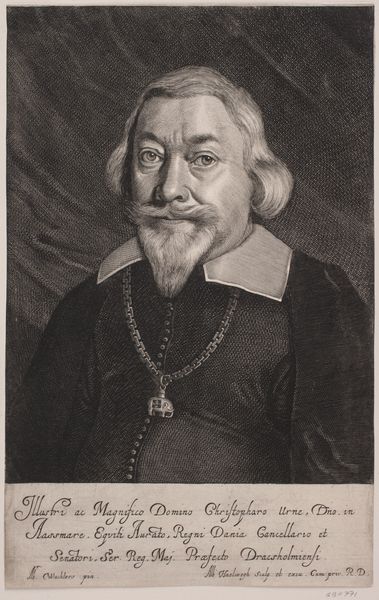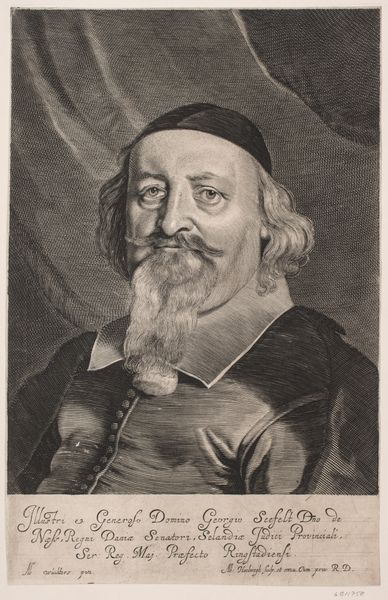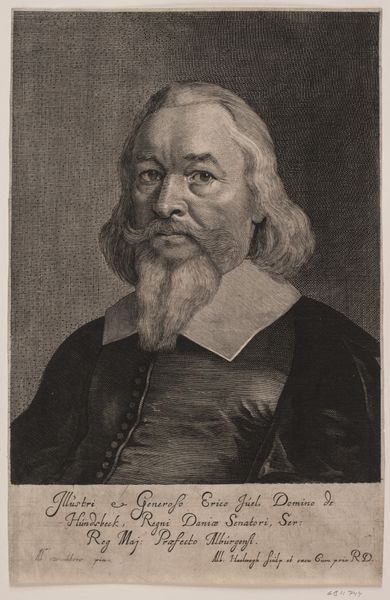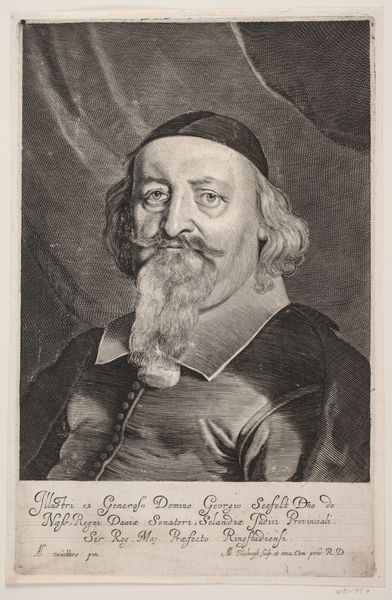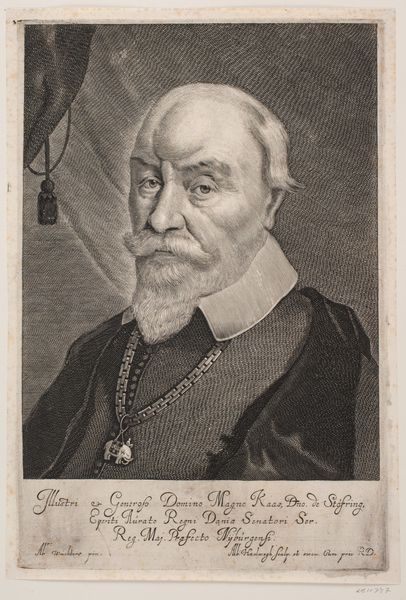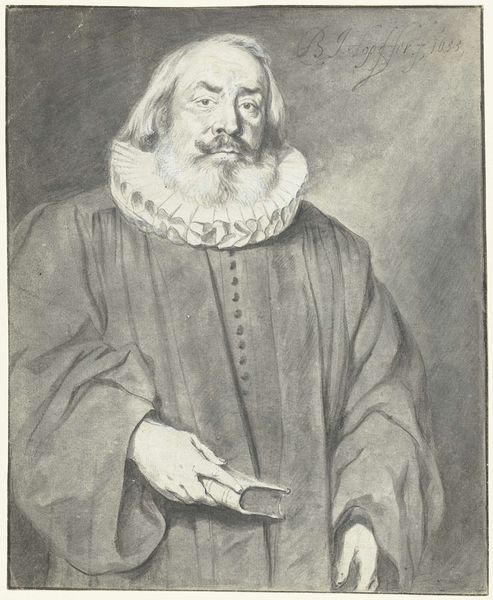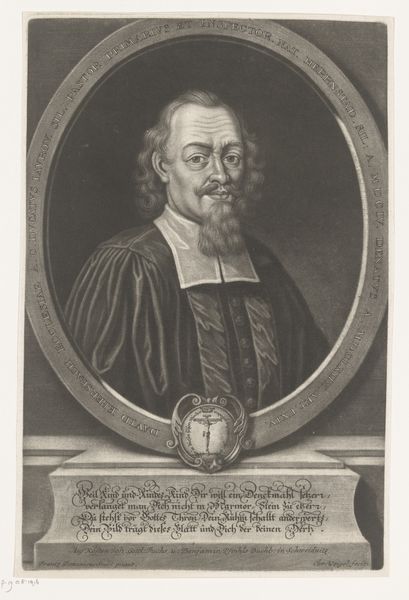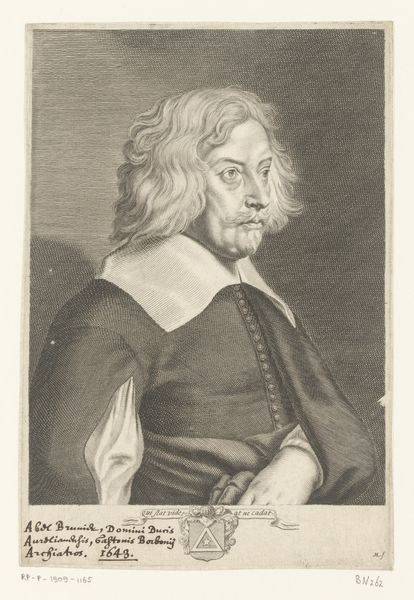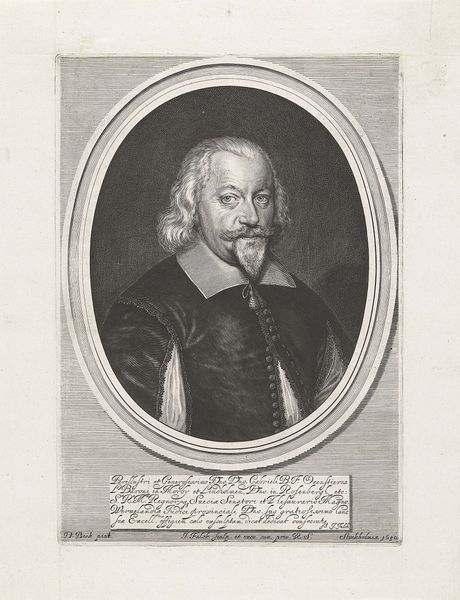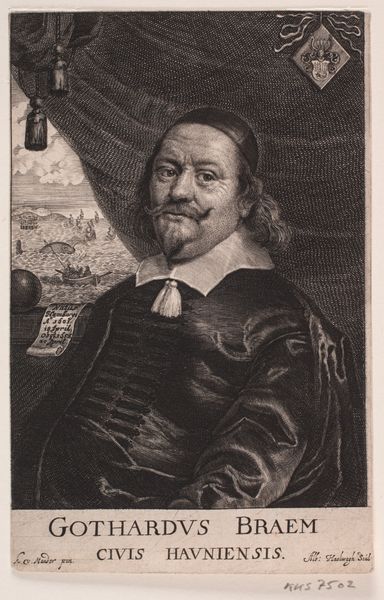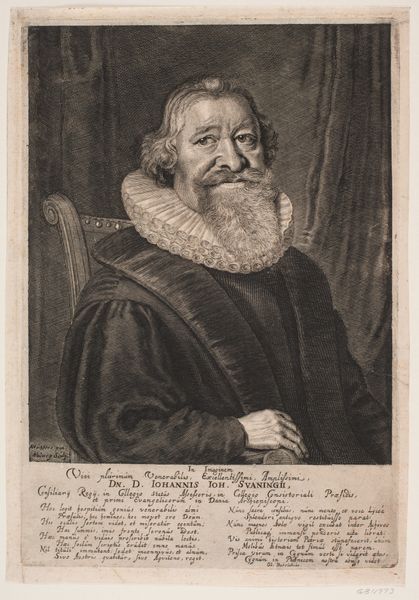
print, engraving
#
portrait
#
baroque
# print
#
engraving
Dimensions: 323 mm (height) x 206 mm (width) (plademaal)
Curator: I'd like to introduce you to Albert Haelwegh's portrait of Christopher Urne, made between 1655 and 1659. It's currently held at the SMK, Statens Museum for Kunst. What are your initial impressions? Editor: A rather imposing figure, wouldn't you say? The meticulous detailing in the engraving creates a strong sense of presence. There's an undeniable weight to the composition. Curator: Absolutely. Haelwegh has skillfully employed line and texture to define Urne’s features. Look at the density of lines used to build up the dark background and contrast it against the stark white collar, which directs the eye towards the face. The strategic use of hatching and cross-hatching is also evident. Editor: The symbolic weight he carries is literally displayed. The elephant pendant is what commands my attention. This likely signifies his affiliation with a particular order or perhaps alludes to qualities associated with elephants, such as wisdom, memory, and strength, qualities expected of a chancellor. Curator: A keen observation! The object signifies not just status, but identity, aligning personal branding within social semiotics of the era. But look also how Haelwegh uses visual rhetoric to convey this identity through very effective use of symmetry. The central axis runs straight through the face, dividing the man’s face. This formal technique underpins the sitter’s social positioning. Editor: The engraver also draws attention to Urne’s humanity, particularly in the rendering of his eyes and mouth, suggesting both power and vulnerability. There’s cultural memory embedded in such imagery. Urne becomes more than just a likeness, he embodies societal values and expectations. Curator: Indeed, Haelwegh’s sophisticated control of his materials delivers an astute rendering that merges individual presence and symbolic meaning. The textures of the skin, hair, and clothing are so vivid and complex. Editor: The artist leaves us much to unpack. One departs this image with much to contemplate about legacy, identity and representation. Curator: Precisely, it underscores the complexities inherent to the genre, doesn't it? How portraits function as both records and constructed statements.
Comments
No comments
Be the first to comment and join the conversation on the ultimate creative platform.
